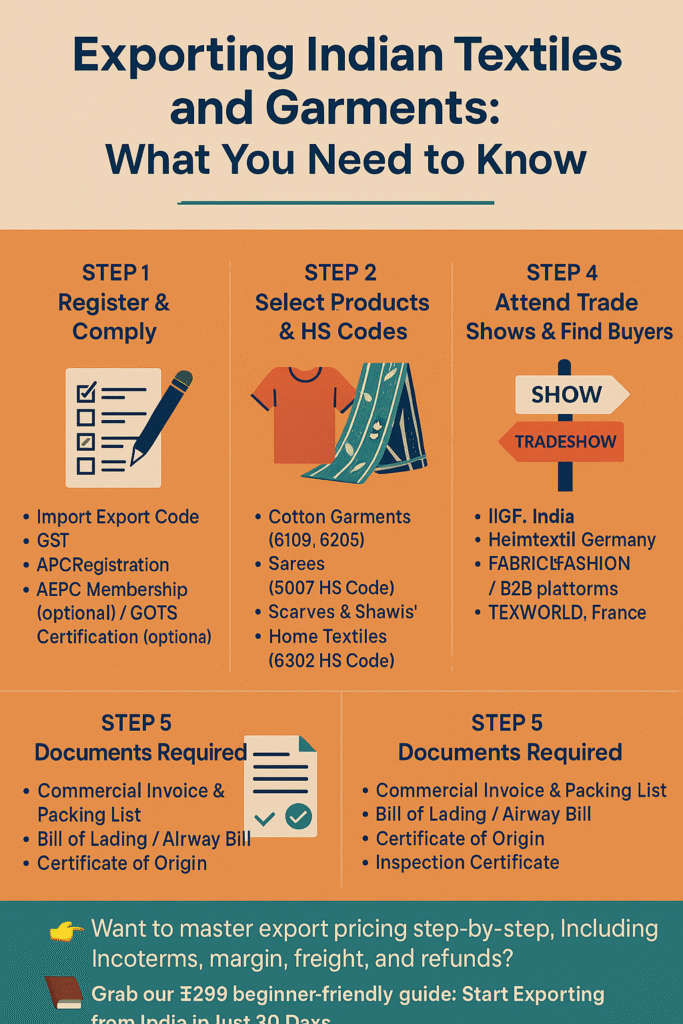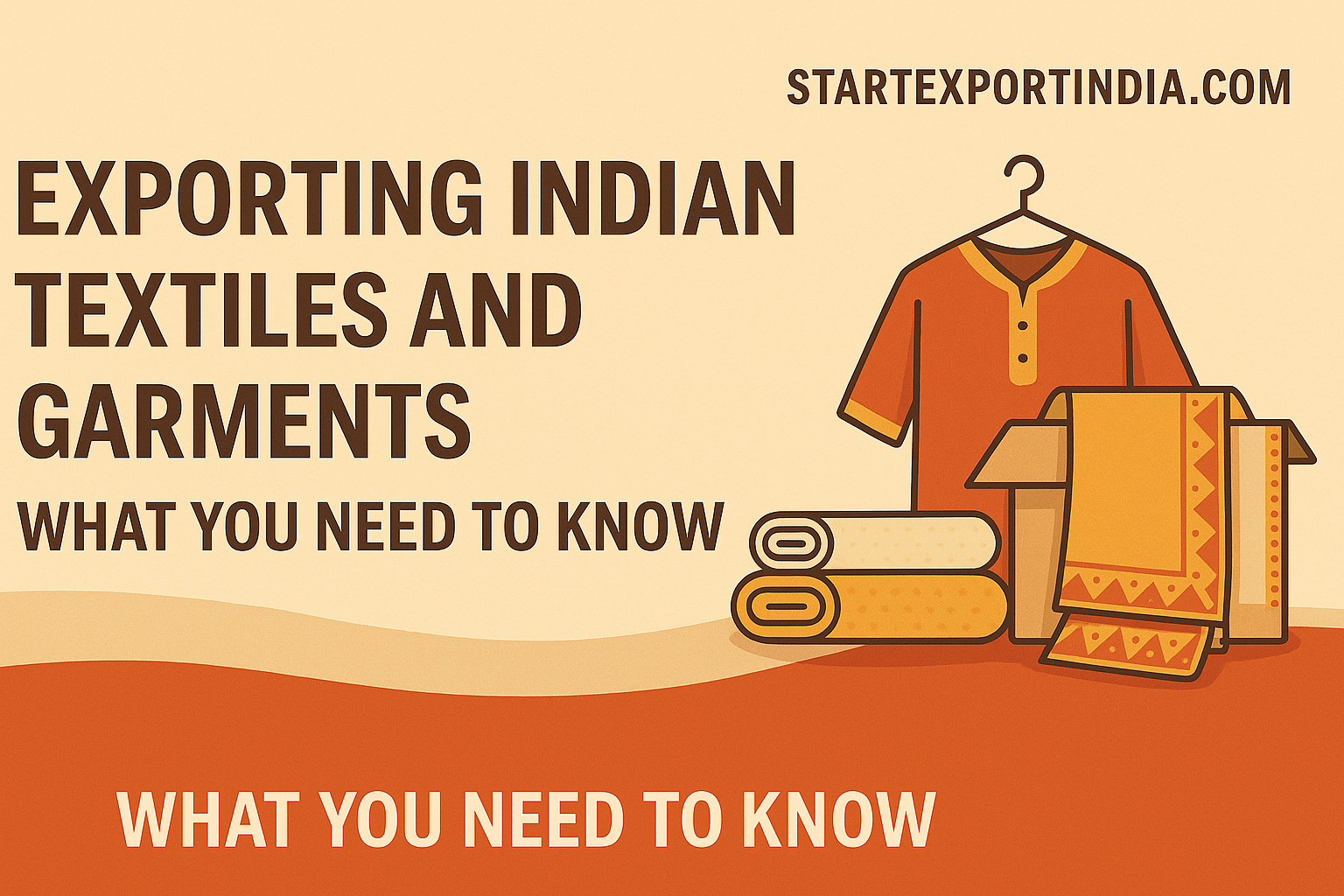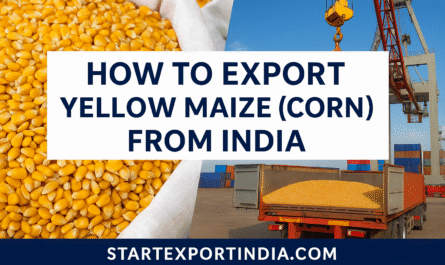Exporting Indian Textiles and Garments: What You Need to Know
India is globally renowned for its rich textile heritage and garment manufacturing prowess — from handlooms to high-fashion ready-mades, the country offers an enormous variety of products to the world. If you’re planning to enter this market, this guide outlines everything you need to know to start exporting textiles and garments from India.

🧵 Step 1: Register Your Business and Get Compliant
Before you begin, ensure these essential registrations are in place:
- Import Export Code (IEC) – mandatory
- GST Registration
- AEPC Membership (Apparel Export Promotion Council) – helpful for buyer connections and incentives
- Udyam Registration (if you’re an MSME)
🧑⚖️ Optional but recommended:
- GOTS Certification – for organic textile exports
- SA8000 / WRAP – for social compliance in garment manufacturing
📦 Step 2: Know the Products You Can Export
Popular Indian Export Categories:
- Cotton and synthetic garments (men’s, women’s, kidswear)
- Scarves, shawls, stoles, and sarees
- Bedsheets, cushion covers, home linens
- Handloom fabrics (Khadi, Chanderi, Banarasi)
- Readymade garments (woven & knitted)
💡 Focus on high-demand niches like sustainable fabrics, boho prints, and organic cottonwear.
🔢 Step 3: Use Correct HS Codes
Accurate HS codes are crucial for customs clearance and duty assessment. Some examples:
| Product | HS Code |
|---|---|
| Cotton garments (men’s/women’s) | 6109, 6205 |
| Sarees | 5007 |
| Silk fabric | 5002, 5003 |
| Shawls, scarves | 6214 |
| Bed linen | 6302 |
| T-shirts | 6109 |
✅ Always verify codes with DGFT or your CHA to avoid delays.
🌍 Step 4: Understand International Standards (EU/US)
Each country has its own technical and safety requirements for textile and apparel imports:
🇪🇺 EU Standards:
- REACH Compliance (chemicals and dyes)
- AZO-free dye usage
- CE labeling (for certain categories like kidswear)
- Social audits (SA8000)
🇺🇸 US Standards:
- Flammability standards for children’s wear
- CPSIA compliance (Consumer Product Safety)
- Lab testing & fiber content labeling
- No forced labor certifications
🔍 Tip: Many buyers require third-party certifications. Having these upfront builds trust.
📣 Step 5: Attend Trade Shows & Find Buyers
Get exposure and leads by attending top textile export expos:
| Event | Region | Hosted By |
|---|---|---|
| India International Garment Fair (IIGF) | Delhi, India | AEPC |
| Heimtextil | Germany | Messe Frankfurt |
| Magic Las Vegas | USA | Informa Markets |
| Texworld | Paris/USA | Messe Frankfurt |
| IndTex Expo | Pan-India | TEXPROCIL |
🧾 You can also connect with buyers via B2B portals like Fibre2Fashion, TradeIndia, Alibaba, and through textile-specific LinkedIn groups.
🚢 Step 6: Documents Required for Export
Standard documentation includes:
- Commercial Invoice & Packing List
- Certificate of Origin
- Bill of Lading / Airway Bill
- Inspection Certificate (if required)
- GSP Certificate (for duty benefit in EU)
- Letter of Undertaking (LUT) for GST-exempt export
✅ Conclusion
India’s textile and apparel exports are growing rapidly due to demand for affordable, ethical, and diverse fashion products. By complying with export documentation, using proper HS codes, and networking at trade shows, you can build a strong international business in fashion exports.
👉 Want to master export pricing step-by-step, including Incoterms, margin, freight, and refunds?
📘 Grab our ₹299 beginner-friendly guide:
Start Exporting from India in Just 30 Days
Visit 👉 StartExportIndia.com



